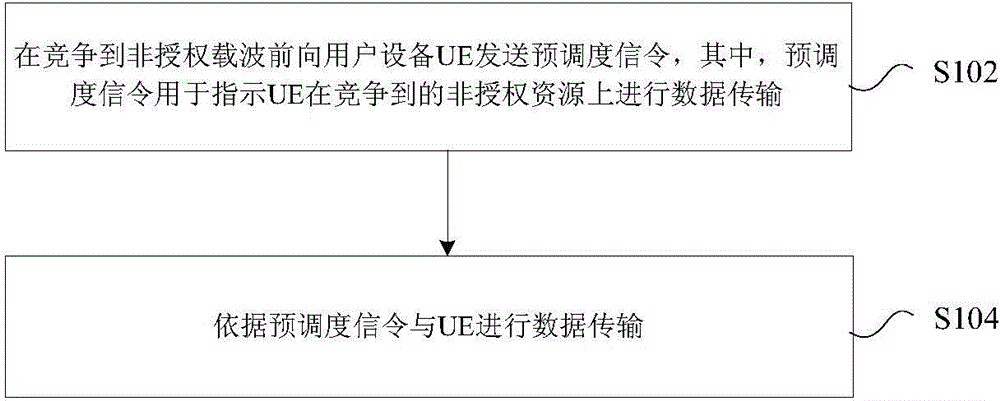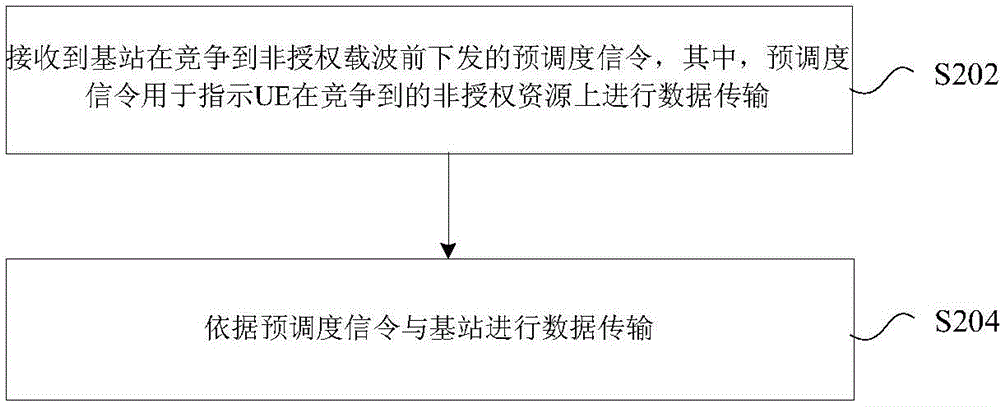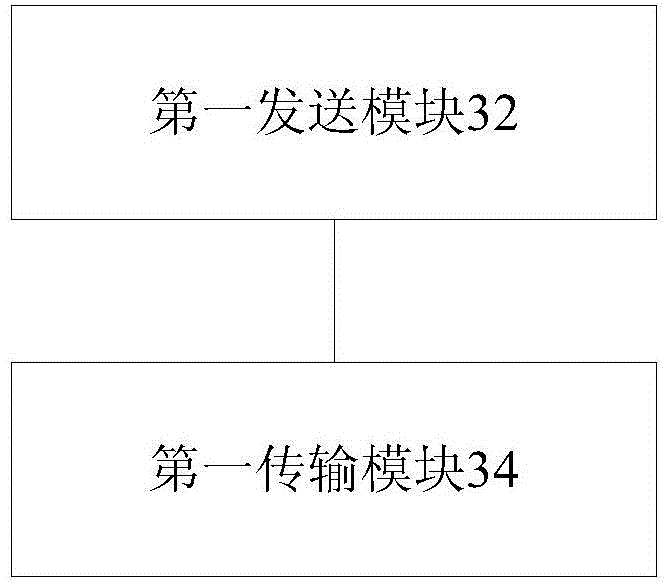Data transmission method, data transmission device, base station and user equipment
A data transmission method and data transmission technology are applied in the fields of data transmission methods, devices, base stations and user equipment, and can solve the problems of low resource utilization and discontinuous data transmission.
- Summary
- Abstract
- Description
- Claims
- Application Information
AI Technical Summary
Problems solved by technology
Method used
Image
Examples
Embodiment 1
[0234] In this preferred embodiment, the base station sends the pre-scheduling signaling to the UE in detail, and only the base station participates in the contention in this embodiment.
[0235] Suppose the base station determines to schedule some UEs on unlicensed carriers, and sends pre-scheduling signaling to some scheduled UEs at the Mth moment before competing for unlicensed resources. The content of the pre-scheduling signaling includes: carrier index, allocated PRB The number and location, UL grant uplink authorization information such as MCS, or subframe index indication information.
[0236] Wherein, the base station determines to send the pre-scheduling signaling to the relevant UE according to the SR (Scheduling Request) or BSR (Buffer Status Report) of the UE or the priority of determining that the UE has data and services and the system resources on the authorized carrier.
[0237] For services with high priority or UEs with large BSR, the base station preferably...
Embodiment 2
[0250] In this preferred embodiment, the specific process of the base station notifying the UE after obtaining resources and the UE performing uplink data transmission according to the pre-scheduling signaling is described in detail.
[0251] The base station notifies the UE of the scheduling signaling before competing for resources, and the UE encodes and modulates the data according to the signaling, while waiting for the result of the resource competition of the base station.
[0252] The base station competes for unlicensed resources according to predefined rules. After obtaining the resource, the base station needs to send transmission indication information to notify the UE, so that the UE can send uplink data after determining that the carrier is available.
[0253] The base station notifies the UE that the resources have been contended for in one of the following ways, that is, the transmission instruction information is carried in the following ways:
[0254] Mode 1: T...
Embodiment 3
[0272] In this preferred embodiment, the method for the base station to trigger the UE to perform resource competition is described.
[0273] The UEs that trigger the contention for unlicensed resources include UEs in an idle state and UEs with a scheduling request SR.
[0274] For SR UE, there are two ways:
[0275] The first one is the predefined cycle method. The UE competes in some unlicensed frequency bands according to a predefined period, such as an SR period, or other configured periods.
[0276] The second type is dynamically triggered through DCI, or triggered through NACK signaling.
[0277] For DCI dynamic triggering methods, there are two types:
[0278] The first method: the UL grant implicit indication method, that is, the UE receiving the UL grant judges whether it is an authorized carrier or an unlicensed carrier according to the carrier indication field. If the scheduled carrier is an unlicensed carrier, resource competition will be performed first.
[02...
PUM
 Login to View More
Login to View More Abstract
Description
Claims
Application Information
 Login to View More
Login to View More - R&D
- Intellectual Property
- Life Sciences
- Materials
- Tech Scout
- Unparalleled Data Quality
- Higher Quality Content
- 60% Fewer Hallucinations
Browse by: Latest US Patents, China's latest patents, Technical Efficacy Thesaurus, Application Domain, Technology Topic, Popular Technical Reports.
© 2025 PatSnap. All rights reserved.Legal|Privacy policy|Modern Slavery Act Transparency Statement|Sitemap|About US| Contact US: help@patsnap.com



